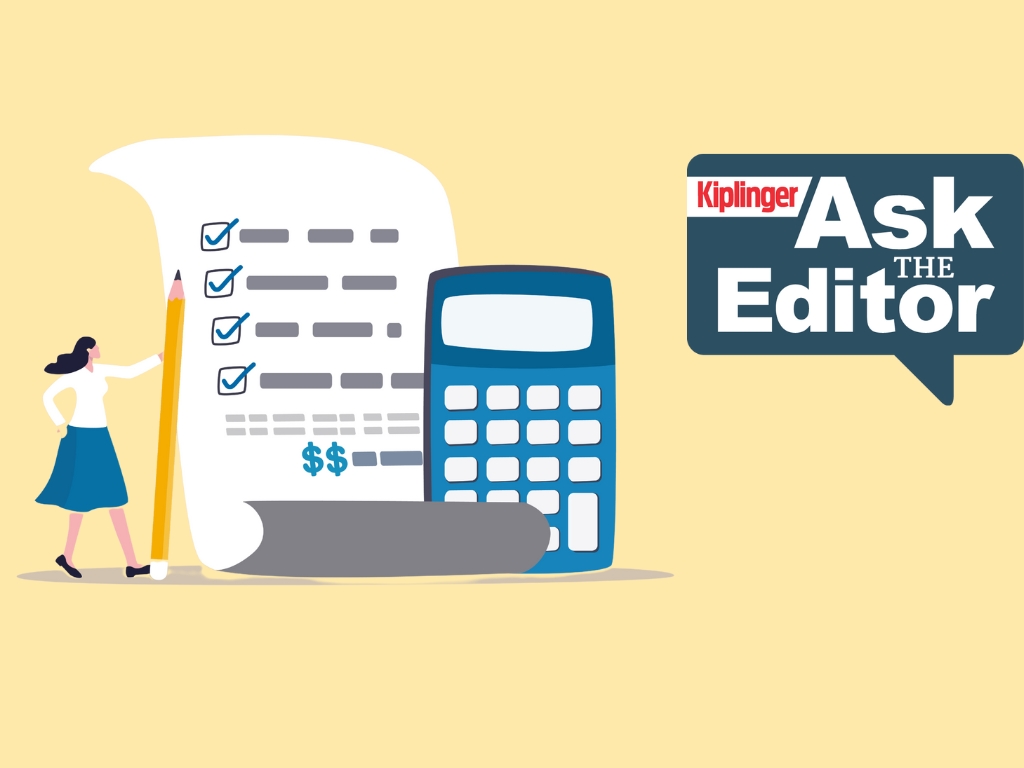6 Easy Steps to Figure Out How Much You Need to Retire
Before you can reach your lump sum goal, estimate the income required to support the retirement you want.

I've helped hundreds of people plan for and transition into retirement. I get questions every day about market direction, investment recommendations, tax efficiency and insurance requirements. However, the one question I receive more than any other is: "How much will I need to retire?"
This question is often followed up with, "How can I possibly answer that if I don't know how long I'm going to live? What are the markets going to do along the way? What about taxes and inflation?" The list goes on. While the question itself is simple, the thought becomes overwhelming with so many variables and everyone's situation being very different.
The problem is people are too focused on trying to save up to a lump sum number. The first thing you should be focusing on is how much income you are looking for in retirement. This is a very hard mental shift for people to make. We spend our whole lives simply saving and growing our money, and so we are trained to focus on a lump sum number. In retirement, we first need to focus on the income we want to live off of every month. After determining that, going through these six steps will make it very easy to come up with the lump sum number you need to reach.
From just $107.88 $24.99 for Kiplinger Personal Finance
Become a smarter, better informed investor. Subscribe from just $107.88 $24.99, plus get up to 4 Special Issues

Sign up for Kiplinger’s Free Newsletters
Profit and prosper with the best of expert advice on investing, taxes, retirement, personal finance and more - straight to your e-mail.
Profit and prosper with the best of expert advice - straight to your e-mail.
1) Find your income need.
Your income goal is the most crucial aspect of every retirement plan. Nobody is a fan of budgeting, but as you approach retirement, this exercise is crucial. If you haven't developed a budget, don't panic—make it simple. First, consider your fixed expenses—such as housing, transportation, medical, food, insurance, etc. Then, look at your discretionary expenses. Golfing or boating, travel or fine dining—these vary for everybody. With these expenses, you should start out with your goal amounts, not the bare minimums. It's pretty simple—all of these expenses will equal your income goal!
2) Optimize current income sources.
You will already have some income coming in, even after the paychecks stop—things such as Social Security, pensions, rental income, etc. Deciding exactly when to start claiming your Social Security benefits can make a big difference in your retirement income. You want to get this part right. The more you optimize income sources that are already built in, the closer you are to your retirement goal.
3) Figure out the income gap.
Step one showed you what your overall income goal is going to be, and step two taught you how much income you can already expect. However, the income already coming in probably isn't enough to meet your overall goal. If that's the case, now you know what your "income gap" is. This gap needs to be filled by all of the retirement savings, insurance contracts and investments you have.
4) Make conservative inflation and longevity assumptions.
There's a silent villain in your retirement plan called inflation. Whatever your income goal is, you have to adjust it upward for inflation for the life of your retirement. I suggest using 3% as an inflation target.
Also, we are all living historically long in retirement. Unless you have any serious medical concerns, you should plan for this income to continue until a minimum of age 90—longer, if possible.
5) Analyze legacy goals.
There's no right or wrong answer here, only what you care about. Do you want to try and maximize the inheritance that you leave behind someday? Or would you rather have the last check you write claim the last penny? This question determines whether your portfolio's principal needs to stay fixed, grow or can be spent down (as long as you don't run out). If you are okay spending down assets, then your retirement plan doesn't need to have as much. If you need your assets to stay the same or grow for an inheritance, it's going to require more for your plan to make it work.
6) Identify your investing style and risk tolerance.
Understanding who you are as an investor and what type of risk you are willing and able to take helps you recognize what type of investments in general you are comfortable with. Once you know what investments you will have, you can make informed assumptions of the rates of return your assets may have in retirement. It's important to know, however, that past performance does not indicate future results, so you should not rely on solely on that data.
Here's a hypothetical example. Mr. and Mrs. Retiree are age 65 and both retire. Their goal is $8,000 a month of total gross income. They have a pension of $1,800 a month and combined Social Security benefits of $3,500 a month. They want to make sure their income plan runs until age 90. They also have legacy goals and want to have at least $500,000 of their savings still there at age 90. We will assume 3% for inflation. We will also assume their short-term investments earn 3%, their intermediate-term investments earn 5% and their long-term investments earn 6%.
In this case, the couple needs to have $800,456 by age 65 to retire the way they want. Follow the six steps to figure out what your number is and start planning for your retirement today.
Bradley White, Investment Adviser Representative and insurance professional (CA license # 0K53785), is vice president of Epstein and White. He's a Certified Financial Planner™ and has a bachelor's degree in Finance from San Diego State University.
Steve Post contributed to this article.
Profit and prosper with the best of Kiplinger's advice on investing, taxes, retirement, personal finance and much more. Delivered daily. Enter your email in the box and click Sign Me Up.

Bradley White is founder and CEO of Epstein and White. He's a Certified Financial Planner™ and has a bachelor's degree in finance from San Diego State University. He's an Investment Advisor Representative (IAR) and an insurance professional.
-
 Ask the Editor: Itemized Deductions
Ask the Editor: Itemized DeductionsAsk the Editor In this week's Ask the Editor Q&A, Joy Taylor answers questions on itemized deductions claimed on Schedule A of Form 1040
-
 9 Types of Insurance You Don't Need
9 Types of Insurance You Don't NeedFinancial Planning If you're paying for these types of insurance, you may be wasting your money. Here's what you need to know.
-
 Are You Putting Yourself Last? The Cost Could Be Your Retirement
Are You Putting Yourself Last? The Cost Could Be Your RetirementIf you're part of the sandwich generation, it's critical that you don't let the needs of your aging parents come at the expense of your future.
-
 Are You Putting Yourself Last? The Cost Could Be Your Retirement Security
Are You Putting Yourself Last? The Cost Could Be Your Retirement SecurityIf you're part of the sandwich generation, it's critical that you don't let the needs of your aging parents come at the expense of your future.
-
 5 Smart Things to Do With Your Year-End Bonus, From a Financial Professional
5 Smart Things to Do With Your Year-End Bonus, From a Financial ProfessionalAfter you indulge your urge to splurge on a treat, consider doing adult things with the extra cash, like paying down debt, but also setting up a "fun fund."
-
 Are You a Gen X Investor? Here's How You Can Protect Your Portfolio From an AI Bubble
Are You a Gen X Investor? Here's How You Can Protect Your Portfolio From an AI BubbleAmid talk of an AI bubble, what's the best course of action for investors in their 50s and 60s, whose retirement savings are at risk from major market declines?
-
 Hey, Retirees: Put Your Charitable Gifts in a Donor-Advised Fund (and Enjoy Your Tax Break)
Hey, Retirees: Put Your Charitable Gifts in a Donor-Advised Fund (and Enjoy Your Tax Break)A donor-advised fund is a simple (really!), tax-smart strategy that lets you contribute a large, tax-deductible gift now and then distribute grants over time.
-
 If You're a U.S. Retiree Living in Portugal, Your Tax Plan Needs a Post-NHR Strategy ASAP
If You're a U.S. Retiree Living in Portugal, Your Tax Plan Needs a Post-NHR Strategy ASAPWhen your 10-year Non-Habitual Resident tax break ends, you could see your tax rate soar. Take steps to plan for this change well before the NHR window closes.
-
 Could Target-Date Funds With Built-In Income Guarantees Be the Next Evolution in Retirement Planning?
Could Target-Date Funds With Built-In Income Guarantees Be the Next Evolution in Retirement Planning?With target-date funds falling short on income certainty, retirement plans should integrate guaranteed income solutions. Here is what participants can do.
-
 Your Year-End Tax and Estate Planning Review Just Got Urgent
Your Year-End Tax and Estate Planning Review Just Got UrgentChanging tax rules and falling interest rates mean financial planning is more important than ever as 2025 ends. There's still time to make these five key moves.
-
 Past Performance Is Not Indicative of Your Financial Adviser's Expertise
Past Performance Is Not Indicative of Your Financial Adviser's ExpertiseMany people find a financial adviser by searching online or asking for referrals from friends or family. This can actually end up costing you big-time.